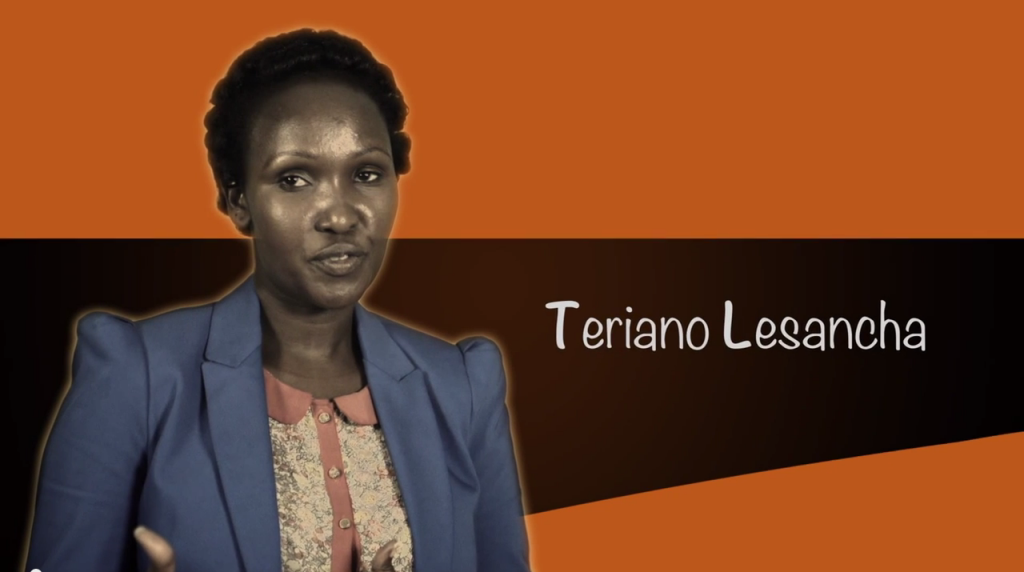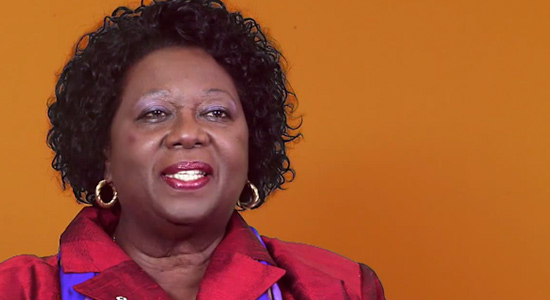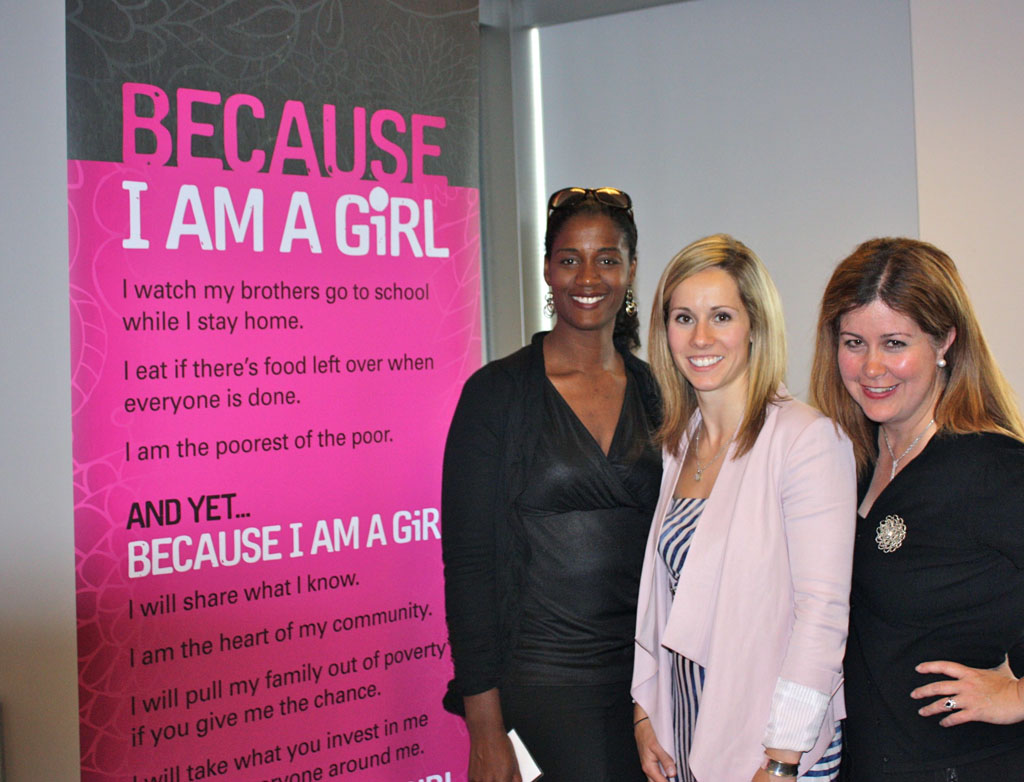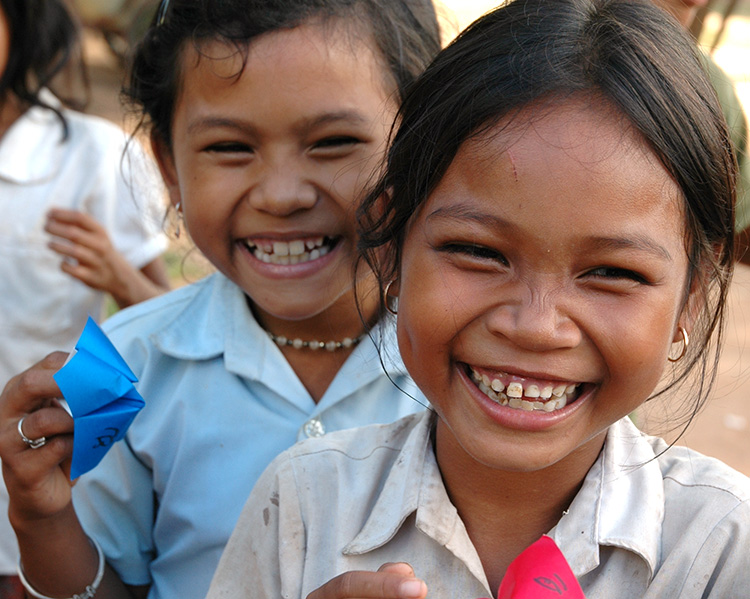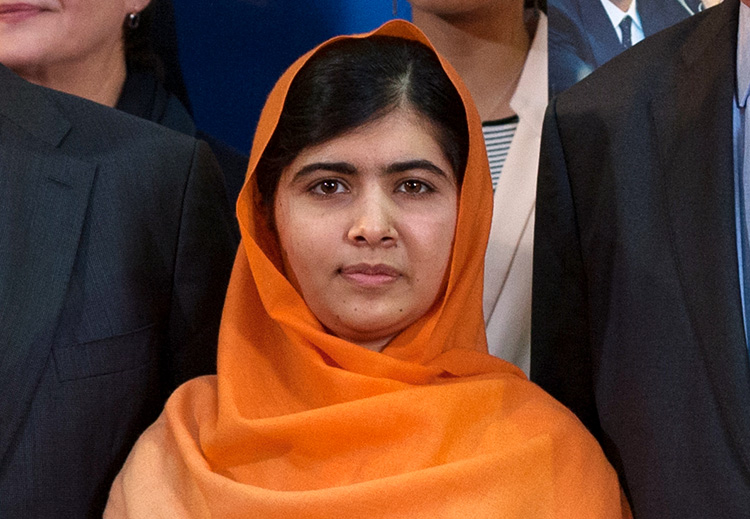|
Unit 1: Human Rights
Chapter 3: Gender
 |
|||||||||||||||||||||||||||||||||||||||||||||||||||||
Educator Tools
|
| He | him | His | His | himself |
| She | Her | Her | Hers | herself |
| They | Them | Their | Theirs | themself |
| Ve | Ver | Vis | Vis | verself |
| Ze/zie | Hir | Hir | Hirs | hirself |
 Definitions
Definitions
Sexual Orientation
This is a scientific term for an individual’s physical, romantic and/or emotional attraction to other individuals. The term ‘sexual preference’ disrespects the LBGTQ+ community because it implies that one’s sexual orientation is ‘curable’ and ‘temporary’.
Gay
This is an adjective describing people who are attracted to people of the same sex. Sometimes lesbian is the term preferred by women. Homosexual is now considered derogatory and offensive to many lesbian and gay people.
Lesbian
A woman who is attracted to other women. Some lesbians prefer to be identified as gay, but the word is to be used as an adjective: gay women.
Bisexual, Bi
A person who is attracted to those of the same gender, as well as those of another gender.
Transgender:
A broad term used to describe the experience of individuals who have an internal gender identity that differs from the sex they were assigned at birth and based on their genitals. Gender identity is an individuals’ internal sense of maleness, femaleness, both or neither. Transgender is not dependent on sexual orientation.
Transgender man
The term refers to someone who has been assigned female at birth but who identifies as a man. Some may prefer to simply be called man, without any modifier.
Transgender woman
Someone who was assigned male at birth but who identifies and lives as a woman. Naturally, some may prefer to be called woman, without any modifier. It’s best to ask each person which term they prefer.
Queer
An adjective used by people, particularly younger people, whose sexual orientation doesn’t classify as exclusively heterosexual (e.g. queer person, queer woman). This term encompasses many types of identities and sexual preferences.
Intersex
An umbrella term which describes people born with reproductive or sexual anatomy and/or a chromosome pattern that can’t be classified as typically male or female. The outdated and derogatory term ‘hermaphrodite’ should not be used. To learn more visit: https://interactadvocates.org/our-advocacy/intersex-youth/
Asexual
This adjective describes people who are not sexually attracted to anyone of any sex. For more information, visit www.asexuality.org
Heterosexual
An adjective used to describe people who are attracted to people of the opposite sex (also referred to as straight).
Pansexual
This fairly new term describes someone who is attracted to people of all gender identities. These people are more attracted to a person’s qualities rather than their specific gender. Certain celebrities have brought this term to the mainstream. Example: Miley Cyrus identified as pansexual in 2015.
Two Spirit (2S)
A term used by Indigenous People who have both masculine and feminine spirits, as it refers to cultural identity and a resistance to colonial definitions for sexual and gender identity. It was first coined in 1990 at the third annual intertribal Native American/First Nations Gay and Lesbian Conference in Winnipeg. The term is not used by every Indigenous person who identifies as LGBTQ+ however.
Homophobia
Fear of people attracted to the same sex.
Nonbinary
Some people experience their gender identity or expression as falling outside of the categories of man and woman.
Cisgender
This is a term describing people who are not transgender. “Cis-“ comes from the Latin prefix meaning “on the same side as.”
Gender non-conforming
This term describes people whose gender expression is different from conventional expectations of masculinity and femininity. Be careful not to confuse this term with transgender because being transgender does not make someone gender non-conforming.
Gender fluid
This term describes people whose identity shifts or fluctuates. Sometimes these individuals may identify or express themselves as more masculine on some days, and more feminine on others.
Gender-neutral
Someone who prefers not to be described by a specific gender, but prefers “they” as a singular pronoun.
Intersectionality
A term used to describe anyone who is more than one ‘minority’, ie. Black and a woman. Here’s an impactful and informative TedTalk by the creator of the term, Kimberlé Crenshaw. Kimberlé explains why we need to reframe our thinking, and pay attention to the layers within each person’s experience when facing injustice. It’s a systemic problem – but humans created the system, hence we can revise it as necessary to ensure that everyone is represented.
The urgency of Intersectionality – Kimberlé CrenshawWatch this and share your voice on social media using the hashtag #SayHerName
For more on LGBTQ+ issues, homophobia and terminology see Voices into Action chapter: The Nazis’ View of Homosexuality, plus Homophobia today
For additional information about the LGBTQIA+ community and an organization protecting their rights visit: https://www.glaad.org/about
ACTION 5
Do
Write and Discuss
The teacher/instructor prints out copies of the Reaction Wheel in the Teaching Tools section (students do not have access to this page as it requires being logged in): http://voicesintoaction.ca/PDFs/VIA_Teaching_ToolsEN.pdf
Fill out your own Reaction Wheel, and answer the following questions:
- Which of the terms listed above have confused you in the past?
- Were you uncomfortable to ask someone what label they identify as? Why?
- Do you feel it’s important to respect people’s label, identity, and pronoun?
- What difficulties may arise when honouring people’s label, pronoun, or identity?
Then share and discuss in a small group of four.
Dispelling the myths around Transgender
Adapted from: http://abcnews.go.com/Health/questions-answered-transgender-people/story?id=30570113 following the CBS interview with Bruce Jenner, former star U.S. Olympian athlete, where he discusses being transgender.
1. Is Being a Transgender Person Considered a Disorder?
Dr. Johanna Olson, the medical director of the transgender clinic at Children’s Hospital Los Angeles says, “Being transgender is not a mental illness”. She uses the term gender dysphoria to properly explain being transgender. “Gender Dysphoria” is the term medical experts use to describe the distress a person may feel when their gender identity does not match the gender they were assigned at birth. There are various treatment options available to manage this discontent including mental health services, hormonal treatments, and— in some cases— surgery. The causes of transgender identification are still unknown and being explored. More recent studies indicate that the neural wiring of a transgender person’s brain looks more like their gender of identify than the gender of assignment at birth.
2. Are There Transgender Children?
Yes. Children can be transgender, but not all children who experiment with gender play or exhibit gender nonconforming behavior will be transgender adults. Experts say only a small fraction of young children who exhibit gender nonconforming behavior will go on to be transgender later in life. In other words, most of these children will go on to report that their sex assigned at birth aligns with their gender identity.
Psychiatrist Dr. Stephen B. Levine of Case Western Reserve School of Medicine (Cleveland, Ohio), who has treated hundreds of transgender people, says, “What we need to understand is that in development, all of us get dramatically transformed over time by forces we don’t fully understand.”
3. What Treatment Is Given to Children?
“Most people know their gender in early childhood,” says Dr. Olson. “Many times they will assert their gender by saying, “I am a boy” or “I am a girl.” They will also often experience distress about the dissonance between their assigned sex at birth and their experienced gender. As they get older and start to get more cultural messages that their behavior is not normal or acceptable, this may increase the level of stress that they feel.”
For an adolescent experiencing intense gender dysphoria, the first medical option is to take puberty blockers, which prevent physical changes such as breast development and facial hair—buying a child time before a surge of unwanted hormones. It’s important to know that puberty blockers are completely reversible, but are not without some risks including effects on bone development and height. Children cannot be on these blockers indefinitely and need to go through puberty in order to match their internal gender. The second step for a medical transition is cross-sex hormones that cause irreversible effects, such as breast growth from estrogen and facial hair growth brought on by testosterone.
A small 2014 Dutch study of transgender adolescents who were started on puberty blockers as children, demonstrates that those who undergo this treatment (followed later by cross-sex hormones and/or surgery) turn out just as happy as their peers, avoiding the depression that all too often plagues transgender youth.
4. Do All Transgender People Have Surgery?
No. Not all transgender people have surgery—or any medical intervention. Being transgender is not about physical changes—it is about gender identity. For a transgender person, their gender identity does not align with their biological sex.
As Dr. Spack says, “For transgender people, their bodies below the brain do not define their gender status.” There are various reasons some transgender people do not have surgery. For many, the cost is prohibitive. For others, having surgery is not the most important way for them to express their gender. As Dr. Olson says, “There are some people that are completely fine—by the way—with the genitals they have.”
For those who do have surgery, the World Professional Association for Transgender Health (WPATH) recommends coming to the decision with the guidance of mental health professionals who specialize in transgender medicine. They also recommend living in the gender role a person identifies with, for at least 12 continuous months. As Dr. Levine says, “This is not a cavalier thing.”
5. How Many Transgender People Are Lost to Suicide and Murder?
Following the death of Leelah Alcorn in late December 2014, (the transgender 17-year-old woman whose suicide note ended in the plea, “Fix society. Please”) there have been an additional eight transgender youth who died by suicide in 2015. Nick Adams, who works for GLAAD and is a transgender man, says that all of us should be concerned about these tragic numbers. Adams says he believes the number of transgender people who commit suicide isn’t “because transgender people are more mentally unstable than non-transgender people—it’s because we live in a society that gives us very little hope that we can be accepted and understood as our true selves. The culture needs to change so that transgender people can see a future for themselves and survive.” As for homicides, “In 2015,” Adams adds, “seven transgender women have been murdered in the United States.”
Dr. Olson says that some of these tragic findings apply even to her youngest patients, “There’s a lot of self-harm, there’s a lot of cutting, there’s a lot of burning, there’s a lot of suicidal thoughts,” Olson tells ABC News, “There’s a lot of suicide attempts even in very young kids. And so it’s a scary time. And it’s a really important time to be listening if something’s happening like that for a kid.”
The World’s Only Chair in Transgender Studies
https://www.uvic.ca/research/transchair/
The road has not been easy for transgender people. Many people in power still believe that it’s not real, and that a transgender youth can be taught to reject their identity. Here’s a Timeline of Sexual Harassment against transgender people: Timeline of Sexual Harassment Against Transgender People
ACTION 6
Do
Watch the following videos
- Living a Transgender Childhood: https://www.youtube.com/watch?v=FvtLOqyw95E
- 20/20 – A Story of Transgender Children: https://www.youtube.com/watch?v=wGacAy2HLxU
- Norman Spack: How I help transgender teens become who they want to be: https://youtu.be/rzbtSeVZeEE
- Trans Day of Remembrance: https://www.youtube.com/watch?v=rNE9MLS_ugw
ACTION 7
Discuss
New legislation in Canada to Protect Rights of Transgender Canadians
The Canadian Human Rights Act and Criminal Code are being updated according to Bill C-16. Discuss the consequences.
#MeToo
ACTION 8
Do
In a small group, discuss and respond with three points for each of the following questions.
- Why is there a resurgence of the women’s movement/feminism?
- In general, what effects do sexual harassment and misconduct have on society? Provide examples.
- Do men/boys have a different role to play than women/girls in fighting sexual harassment?
Choose a group representative to present the points to the whole class, followed by a class discussion. After the discussion, each group can co-write three paragraphs, thoughtfully answering each question.
Sexual Harassment
Sexual Harassment is an umbrella term that refers to a range of unwanted behaviours. This includes nonphysical harassment, including suggestive remarks and gestures, or requests for sexual favours. Physical harassment includes touches, hugs, kisses, and coerced sex acts. It can be perpetrated by anyone, but is particularly challenging when the perpetrator is higher status than the victim, and is exerting their power over the other in a sexual manner. Examples would be someone who is the victim’s boss, teacher, professor, a celebrity, politician etc. Sexual harassment in the workplace can be perpetrated by anyone – a manager, a colleague, a client. The victim or perpetrator may be male or female and it does not need to occur inside the office.
Source: New York Times – Sexual Harassment
Have you heard of Anita Hill?
In 1991, in the United States, lawyer and academician Anita Hill, broke new ground for women’s rights by testifying against her boss, Justice Thomas, who was her superior at two federal (American) agencies: The Department of Education, and The Equal Employment Opportunity Commission. Until then, a woman testifying against her boss for issues of sexual harassment was unheard of. Justice Thomas denied the accusations, but Ms. Hill is a trailblazer for respecting women in the workforce.
ACTION 9
Discuss
Discuss the following questions with a partner, or with the class.
- Do you find it ironic that the organization who received more than 12,000 allegations of sexual harassment each year was run by Justice Thomas? How could a person separate their work identify from their personal actions?
- Why do most people (both women and men) experiencing such harassment never tell anyone about it?
- Is it effective to simply avoid the harasser, deny or downplay the gravity of the situation, or attempt to ignore, forget or endure the behavior?
Watch Anita Hill’s pivotal testimony in 1991 and then continue your discussion:
Anita Hill’s Testimony
A Timeline of Sexual Harassment and The Women’s Movement
Have a look at this interactive timeline with valuable information about the fight women, and other communities face regarding sexual harassment.
Timeline – a short history of the long fight against sexual harassment
Source: COPYRIGHT © 2018 KQED INC.
ACTION 10
Do
The #MeToo movement has been pivotal in changing the way men behave, and the way women are treated in the workplace. Anita Hill’s heroism inspired women to find the courage to stand up for their rights. Yet women, for the most part, tend to keep quiet about sexual harassment. Why do you think that is?
The power structures in society have been shaken by the #MeToo movement particularly, in the media. It all started when Harvey Weinstein, a powerful film production executive, was criminally charged in New York City with sexually assaulting two women. After those first two brave women shared their painful experiences, many more women confessed to the predatory nature of Weinstein’s dealings with them. Once Weinstein’s shameful behaviour was widely known, he was fired from his own company. This event empowered women who had remained silent about the abuse they were regularly facing in the entertainment industry, and in all industries for that matter.
Tarana Burke, founded the #MeToo movement in 2006 to support survivors of sexual harassment and violence. In October 2017 the hashtag was tweeted by actress Alyssa Milano, encouraging other women to post their own painful stories of abuse on social media. This movement continues to have potentially far-reaching effects as women start to rise to power. Once their behaviour became known, many men were either fired or resigned. Interestingly, forty-three percent of their replacements were women which is a giant step for the women’s movement.
Source: MeToo Replacements
You can share your opinion about the #MeToo Movement. Watch the video, read the article and add comments if you would like to contribute: What is your reaction to the MeToo Movement
The #MeToo Movement in Canada
In Canada, across the country reports to rape crisis centres have more than doubled. According to a survey done by the Canadian Women’s Foundation, 50 per cent of Canadian women have felt pressured into unwanted sexual activity.
https://globalnews.ca/news/4519574/metoo-1-year-later-canada/
Consider getting involved with this organization: Canadian Women’s Foundation
For the impact in Canada, look at all the answers to the questions here:
https://www.canadianwomen.org/the-facts/the-metoo-movement-in-canada/
ACTION 11
Do
Make a list of what makes women different from men in school and the workplace.
Answer these questions:
- How do you think women lead differently than men?
- When hiring, will women hire and promote more women within their industries? What impact will this have on our world?
- How will these changes affect the way we do business, in general?
Research political leaders who are women and the recent changes in leadership worldwide. Then answer the following questions:
- How will women change the cities they live in?
- Do you have any predictions about how the world will change because of the rise of women in positions of power?
- What are your feelings about these changes?
Watch this informative TedTalk about unconscious gender bias, and the neuroscience behind it. Gender equity is not just a women’s issue, it’s a human one. Awareness, without judgement, is key to removing the limitations we place on girls and women: The Neuroscience of Gender Inequality
The Media’s Influence on Society’s Views of Women and Men
ACTION 12
Discuss
Write and Discuss
Fill in the following table with your answers then share and discuss with a partner using the questions below the table.
| Your Favourite Movies (as a child) | The Main Characters | Qualities and Specifics about Main Characters | Was this Character discriminatory? |
|---|---|---|---|
- What do you notice about your list? Is there a pattern regarding how either men or women were represented in these movies?
- Have you ever noticed how sexualized animated female characters can be?
- What is the patriarchy?
- Did you notice the distinction between the way boys/men and girls/women are represented in animated shows?
- How are things changing now that attention has been drawn to women’s issues and the #MeToo movement?
- How do film and TV influence the viewing audience…society?
- Have things changed? That question is worth researching.
Actress Geena Davis presented in Toronto in September, 2018 about her documentary film This Changes Everything which is about gender representation in media. In this insightful interview with CBC’s Tom Power, Geena Davis shares her perspective on the way women are represented in movies (with specific attention paid to children’s movies).
Geena Davis – This Changes Everything
ACTION 13
Discuss
In the interview with Geena Davis, CBC’s Tom Powers asks an interesting question, “What impact do fictional stories have on our society?”
In a small group discuss your answers and ideas on the topic. In addition, answer the following:
- Why do studies show that girls’ self-esteem goes down when they watch TV, while boys’ self-esteem goes up?
- Can you give an example, from a movie or TV show you’ve seen, where you think that this would be the reaction?
The movie MissRepresentation was written, directed and produced by Jennifer Siebel Newsom. This entertaining and provocative movie effectively shows the way girls and women are portrayed in the media and the world. Watch the trailer on Youtube and think about how far women have come in finding true equality in the world.
https://youtu.be/W2UZZV3xU6Q
For additional research, visit the MissRepresentation website with a link to stream the movie, along with lesson ideas and discussion points: http://therepresentationproject.org/film/miss-representation/
ACTION 14
FGM – Female Genital Mutilation
The centuries-old traditional ritual of cutting and mutilating of some or all of the external female genitalia in minors in some African, Asian and Middle Eastern countries as well as within communities from countries where it is practiced. Also known as female circumcision (but of no relation to male circumcision) it is illegal in many countries due to high risks and possible death.
Source: World Health Organization – WHO: http://www.who.int/news-room/fact-sheets/detail/female-genital-mutilation.
It is not legal in Canada: https://www.cbc.ca/news/politics/female-genital-mutilation-citizenship-hussen-1.4502068
Do
You can help end this practice by signing a petition (at the end): https://www.globalcitizen.org/en/content/fgm-in-canada-2/
There is hope for women’s rights however. According to this Toronto Star article, progress is being made very slowly and Canada is showing the way: Progress on Women’s Rights
Boys, Men, and Emotions
As you may have noticed, the strong, silent type is perceived as manly and this has been the ideal for a very long time. Think about characters like James Bond, Arnold Schwartzenegger (The Terminator), Jack Reacher (Mission Impossible), and Mad Max, to name a few. Yet, these ideals may be damaging young men today.
These “manly” characters reinforce the stereotype that experiencing emotions is not masculine. It is becoming evident however that having the courage to face our emotions takes courage. When we deny our emotions, by hiding them from ourselves and from others, we are limiting our own self-awareness and self-knowledge.
Hypermasculinity is when boys and men behave in way exactly contrary to female behavior to ensure they have no resemblance to a woman. The goal is to embody physical strength, aggression and sexuality, as often found in the media with behaviours such as believing violence is manly, danger is exciting and having sexist attitudes toward women. Studies began in 1984. Hypermasculinity
We all cry. When boys are told to ‘suck it up’ and to hold in their tears, they lose touch with their feelings. This kind of repression can have a negative impact on their mental and emotional health. Many psychotherapists who counsel men find that their patients struggle with anxiety and depression which connects to their inability to understand and process their emotions. The childhood messages they receive are damaging them in ways we are only now starting to take notice of. This habit can lead to issues with rage, and unhealthy coping mechanisms like drinking or taking drugs. The statistic which supports the danger of repressing emotions is that suicide rates are four times higher in men than in women.
On the other hand, these are exciting times when traditional roles of people are changing. More and more people are able to express who they are, while demanding respect. Watch this powerful TedTalk: The Mask of Masculinity – the traditional role of men is evolving | Connor Beaton: Connor Beaton – The Mask of Masculinity
Actor Justin Baldoni gives an impactful TedTalk on why he’s done trying to be man enough. In this impassioned plea to both men and women, Justin asks men to find the courage to be vulnerable. With humour and honesty Justin goes deep into the topic. Justin Baldoni Redefines Masculinity
ACTION 15
Discuss
- How do the male students in your school behave differently than the female students?
- Do you witness males admitting their emotions in front of you?
- What is the response, generally, when males share their feelings?
- What is hypermasculinity? (Search the term if you are not familiar with it)
- Are some emotions considered masculine, and others feminine? Why do you think that is?
- How do some men feel challenged by the rise of feminism?
- What can we all do, in school and society, to ensure that males can reveal emotions without being teased?
Further research: Visit Connor Beaton’s site Man Talks: https://mantalks.com/ that aims to help boys and men understand and accept their emotions.
Kaufman, Michael – The Time Has Come, 2019 Book Excerpt: The Time Has Come – Men must join the gender equality revolution
Further resources:
Watch the video – https://www.theguardian.com/society/2014/may/16/what-is-female-genital-mutilation-circumcision-us
Read: However Long the night by Aimee Malloy
Aimee tells the story of American exchange student Molly Melching who when in Senegal learned about the continued practice of genital cutting and mutilation on young girls. The book spans 40 years and shares Molly’s journey through Africa where she became a social entrepreneur and an activist for women’s rights.
Book excerpt: Exclusive excerpt from However Long the Night by Aimee Molloy
As you’ve probably noticed, more and more famous people are expressing their feelings and experiences about the women’s movement and equality, in general. Here’s an empowering speech by actress Emma Watson:Emma Watson and her HeForShe Initiative
There are many organizations supporting women’s rights and helping stop abuse experienced by women, men, and children. The United Nations’ 16 Days of Activism to End Gender-Based Discrimination campaign is an excellent initiative. To read more or get involved, visit: Ending Violence against Women – Take Action
Every effort has been made to gain permission from copyright holders to reproduce borrowed material. The publishers apologize for any errors and will be pleased to rectify them in subsequent reprints and website programming.
Educator Tools

